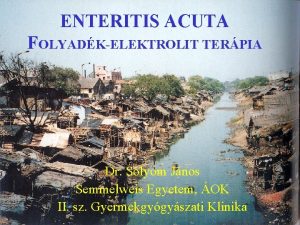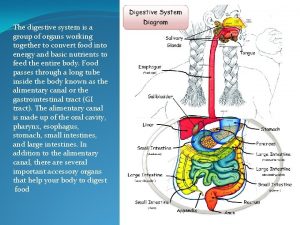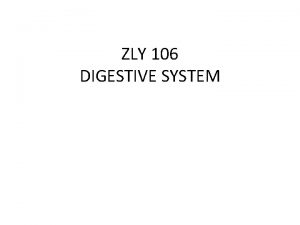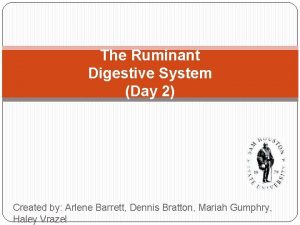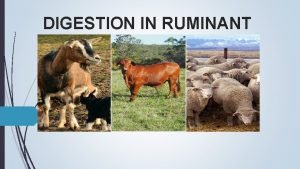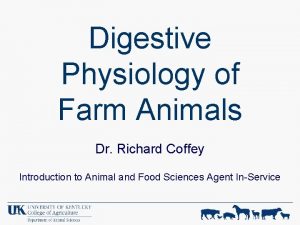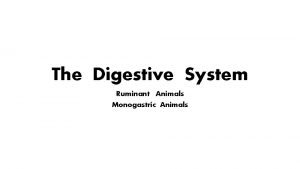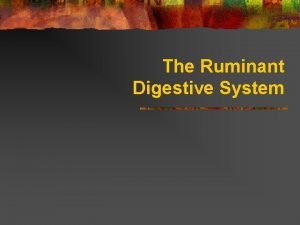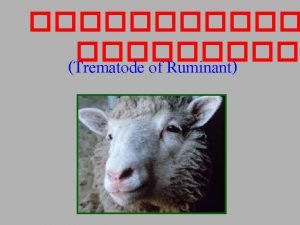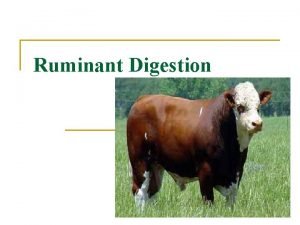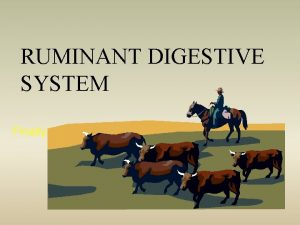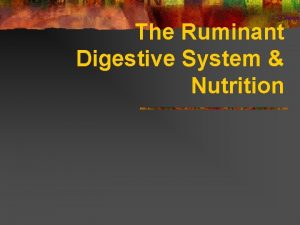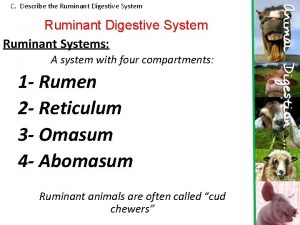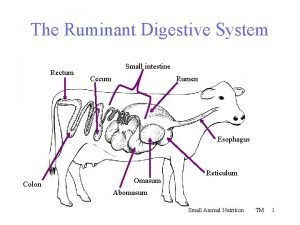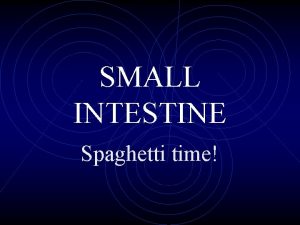PARASITIC DISEASE OF RUMINANT INTESTINE parasitic enteritis There










- Slides: 10

PARASITIC DISEASE OF RUMINANT INTESTINE parasitic enteritis

There are many types of parasites which live in intestine: 1. Nematodes lives in small intestine as Ascaris sp. , Bunstomum sp. or hook worm, Cooperia sp. , Trichostrongylus sp. , Strongyloid or thread worms, Nematodirus sp. , while nematodes of large intestine as Trichuris sp. or whip worms, Chabertia sp. and oesphagostomum sp. 2. Cestodes as Moniezia sp. and larval stage of echinoccoccus. 3. Trematodes as Fasciola sp. , Paramphistomum sp. , and Schistosoma sp. 4. Protozoa as Cryptospordia sp. , Coccidia sp. , Plantidium sp. and Giardia sp.

DEFINITION It is a parasitic disease of ruminants, caused by different species of nematodes living in small or large intestine characterized by diarrhea, loss of weight and anemia.

EPIDEMIOLOGY: Distribution: Widely distributed and endemic in Egypt. Animal susceptible: All ruminants are susceptible but young grazing one especially after weaning are more susceptible.

LIFE CYCLE AND MODE OF TRANSMISSION Eggs pass with feces, under suitable condition of moisture and temperature it hatch to first, second and third larval stage (infective stage), infection occurs by ingestion of third larval stage in water or food or by skin penetration and milk ingestion as in Bunostomum sp. and strongyloides sp. , the larvae is mature within small or large intestine and adult from appear which laying eggs.


PATHOGENESIS The larvae and adult cause irritation and inflammation of intestinal walls with occurrence of diarrhea and dehydration Blood loss as in Bunstomum which secrete anticoagulant during feeding resulting in profuse bleeding from laceration of intestinal mucosa Necrotic nodules of intestinal wall which interfere with mechanical movement of the bowel resulting in stenosis as oesophagostomum

CLINICAL SIGNS: Morbidity and mortality rate variable and course is long. Anorexia, weakness, loss of weight. Intermittent or persistent diarrhea (soft watery feces which contain mucous, blood and shreds of mucosa) as in trichuris, chabertia and strongyloides infection Anemia and submaxillary edema especially in cooperia and bunostomum infection. Intusupection and stenosis and nodules (especially in esophagostomum) may be palpated in intestinal wall (more in sheep than in cattle) on rectal examination

POSTMORTEM LESIONS: Carcass is emaciated, anemic and dehydrated. Intestinal wall is swollen, congested and edematous. The intestine contains watery feces with blood or shred of mucous, necrotic nodules or necrosis in intestinal wall. In esophagostomum, there is intestinal nodules surrounding the larvae which become caseated and calcified.

DIAGNOSIS: Field diagnosis based on signs of anemia, poor body condition, diarrhea, PM, history and epidemiology of the disease. Laboratory diagnosis: - Specimens: feces, intestinal mucosa scrapings, parts of intestine on formalin 10%, blood and serum. - Procedures: Examination of the feces either macro or microscopically by direct or flotation technique after staining by iodine. Fecal egg count or fecal culture to determine the degree of infestation and to differentiate between different parasites from their larvae. Blood and serum biochemical changes reveal anemia and hypoproteinemia. Histopathological findings. Serological diagnosis as agglutination test.
 Enteritis acuta
Enteritis acuta Esophagus stomach small intestine large intestine
Esophagus stomach small intestine large intestine Communicable disease and non communicable disease
Communicable disease and non communicable disease Sheep ruminant digestive system
Sheep ruminant digestive system Ruminant stomach diagram
Ruminant stomach diagram Ruminant animals
Ruminant animals Caillette jeune ruminant
Caillette jeune ruminant Rumen reticulum omasum abomasum
Rumen reticulum omasum abomasum Ruminant animals
Ruminant animals Pig digestive system
Pig digestive system Ruminant digestive system
Ruminant digestive system
